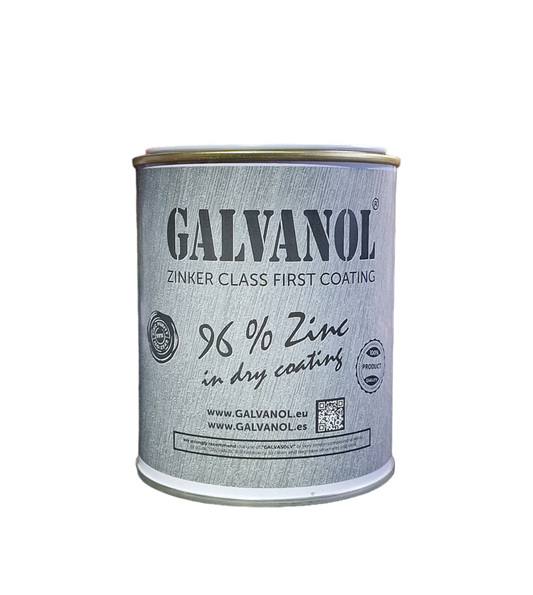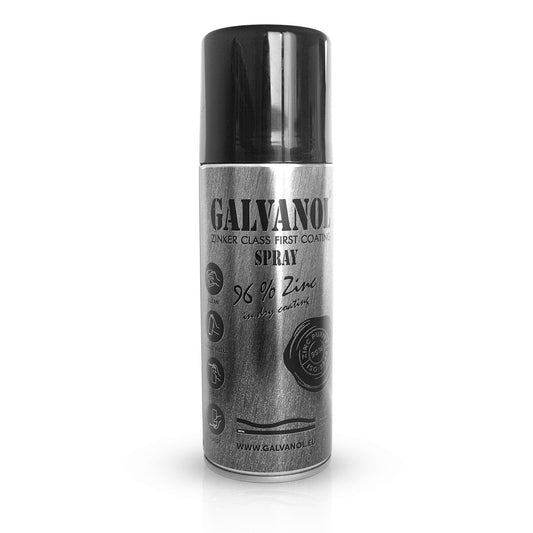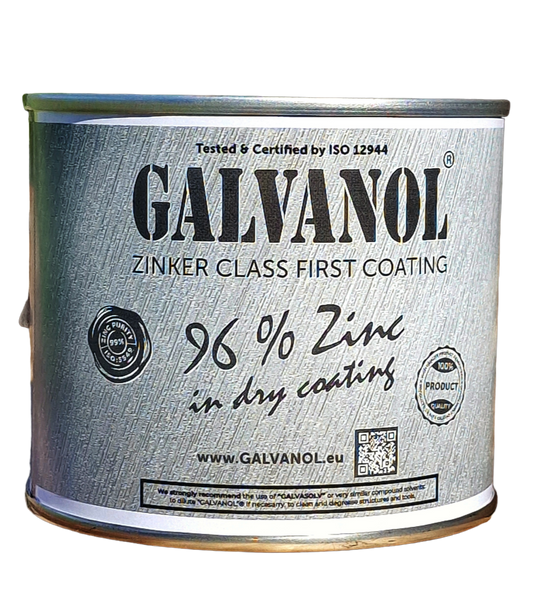In the competitive market for zinc-containing paints and coatings, deceptive marketing strategies are common, which can confuse consumers. Some manufacturers resort to tactics that exaggerate the qualities of their products, without reflecting their true performance. Here we present key considerations to help consumers make informed decisions when choosing a high-quality paint, like GALVANOL, that meets ISO standards and offers reliable performance.
Key consumer considerations:
- Zinc concentration: Some manufacturers highlight misleading zinc percentages. Pay attention to the actual dry layer zinc concentration, as it is a critical factor in providing effective corrosion protection. GALVANOL, with its 96% zinc, meets high standards.
- Zinc purity: The quality of zinc is essential. Ensure the zinc is of high purity to ensure long-lasting performance. GALVANOL uses zinc according to ISO 3549 of 99% purity, contributing to its effectiveness.
- ISO Certifications: Look for paints that have been tested to relevant ISO standards. GALVANOL complies with regulations such as ISO 3549 (zinc purity), ISO 1461 and ASTM A780 (regarding its use as a hot-dip galvanized repair coating), ISO 12944-1:2018 in various categories according to table 1, supporting its quality.
- Laboratory Tests: Independent laboratory tests are reliable indicators. Make sure the product has undergone testing to back up its claims. GALVANOL has been tested in various conditions to ensure its performance.
- Specific Applications: Consider recommended paint applications. GALVANOL is versatile and suitable for a wide range of applications, from industry to civil construction.
- Manufacturer support: The reputation of the manufacturer is key. GALVANOL is produced by GALVANOL IBERIA SL, a recognized company in the industry with a history of high quality products.
By paying attention to these aspects, consumers can avoid falling for deceptive marketing strategies and choose products that meet rigorous standards.
Common Deceptive Marketing Strategies:
- "Contains 100% zinc!"
- Without specifying the actual concentration in the dry layer.
- "Exclusive formula"
- No support from testing or certification.
- "Unmatched protection"
- No details on regulations met.
- "Lifetime guarantee"
- Without clarifying the conditions of the guarantee.
- "New and improved"
- No concrete data on improvements.
- "Maximum resistance"
- No support from specific stress tests.
- "Advanced zinc paint"
- No details on the technology used.
- "Revolutionary innovation"
- Without tangible data on innovation.
- "Long duration"
- Without specifying the exact duration or supporting evidence.
- "Protects against everything"
- Exaggerated claims without support.
- "Exclusive continuous release zinc formula"
- Without clear evidence of how zinc is released or support from scientific studies.
- "Triple layer of zinc for a reinforced defense"
- Without specifying the actual concentration of zinc or providing evidence of the effectiveness of multiple coats.
- "24-hour active protection"
- Unsupported claim about the duration and continued effectiveness of protection.
- "Extreme wear resistance"
- No specific data on stress testing or details on standards met.
- "Improved formula with zinc nanotechnology"
- No clear explanation of how nanotechnology affects protection or support of scientific evidence.
- "Industrial grade zinc paint"
- No details on specific industry standards met or certifications obtained.
- "Guaranteed against all types of weather"
- Broad statement without specifying exact climates and without clear warranty conditions.
- "Boosted zinc for immediate results"
- Lack of clarity about potentiation and no support of evidence of immediate results.
- "Active corrosion inhibition"
- Without clear data on how inhibition is carried out or specific tests of anti-corrosion capacity.
- "Triple action protection: zinc, ceramics and polymers"
- Lack of details on how the components interact and no evidence of the combination's effectiveness.
These strategies highlight the importance of researching beyond marketing claims and choosing products that are backed by rigorous testing and meet recognized industry standards.
Zinc purity deceptions:
Manufacturers can mislead consumers in several ways regarding the purity of zinc in their products:
- Percentage without context:
- Advertise a purity percentage, such as 98% or 99%, without providing details about whether that percentage refers to zinc in the entire product mixture or just a specific part.
- Inclusion of other components:
- Sometimes the purity percentage refers only to the zinc itself, without taking into account other components present in the formula. Evaluating purity comprehensively is crucial.
- Measurements in wet or dry form:
- Manufacturers may indicate the purity of zinc in the wet or dry state. It is crucial to understand under what conditions purity is measured and how this affects the actual application of the product.
- Lack of fulfilled regulations:
- Failure to back up purity claims with specific certifications or regulatory compliance can be a strategy to create an impression of quality without concrete evidence.
- Use of misleading terms:
- Phrases like “technical grade” or “guaranteed purity” may sound convincing, but without certifications or evidence backing up these claims, they can be misleading.
Consumers should be alert and look for products that offer transparency regarding zinc purity, backed by recognized certifications and testing. Additionally, reviewing the specific regulations governing these products can be critical to making informed decisions.
Zinc resistance to high temperatures:
The temperature at which zinc resists depends on several factors, including its shape and the environment. Zinc has a melting point of approximately 419.5 °C (787.1 °F), undergoing a phase change from solid to liquid at higher temperatures.
In applications where high temperature resistance is required, it is recommended to carefully evaluate the exact conditions of use and consider alternatives or add-ons that can provide adequate protection in extreme thermal environments. It is essential to have specific information on the capabilities of the coating or material in question in relation to the expected thermal conditions.
Regarding the minimum amount of dry layer zinc to provide active cathodic protection in general, a dry layer zinc content of 92% and above is considered effective in providing long-lasting corrosion protection.
Higher dry layer zinc content is generally associated with higher quality and superior corrosion protection in coatings. The amount of zinc present in the dry layer is a key indicator of the coating's ability to provide active cathodic protection and resist corrosion.
Furthermore, it is important not only to consider the percentage of zinc in the dry layer, but also the concentration of zinc in the total product mixture. The quality of the zinc used and its purity also play a crucial role in the performance of the coating.
In the case of GALVANOL, which has a zinc content of 96% in the dry layer and uses zinc with a purity of 99%, the aim is to offer effective and long-lasting protection against corrosion. This coating has been designed to meet specific quality standards and regulations, such as ISO 3549 for zinc purity.
When choosing zinc-rich coatings, consumers should pay attention to both the dry layer zinc percentage and the quality of the zinc used in the formulation. In addition, considering specific regulations, certifications and laboratory tests support the effectiveness of the product in real conditions.
Final summary:
In the competitive zinc coatings and paints market, deceptive marketing strategies are common, which can confuse consumers. Manufacturers use tactics that exaggerate the qualities of their products without reflecting their true performance. Here we present key considerations for choosing high-quality paints, such as GALVANOL, that meet ISO standards and offer reliable performance.
Note: This article provides general information and does not constitute professional advice. Consumers are advised to conduct additional research and consult with professionals before making purchasing decisions.
Our mission is to provide reliable and efficient solutions to meet your needs, ensuring that every step we take contributes positively to solving the challenges you may face. If you have any questions about implementing GALVANOL to meet your needs and require professional advice, please do not hesitate to contact us. We are here to help you.




